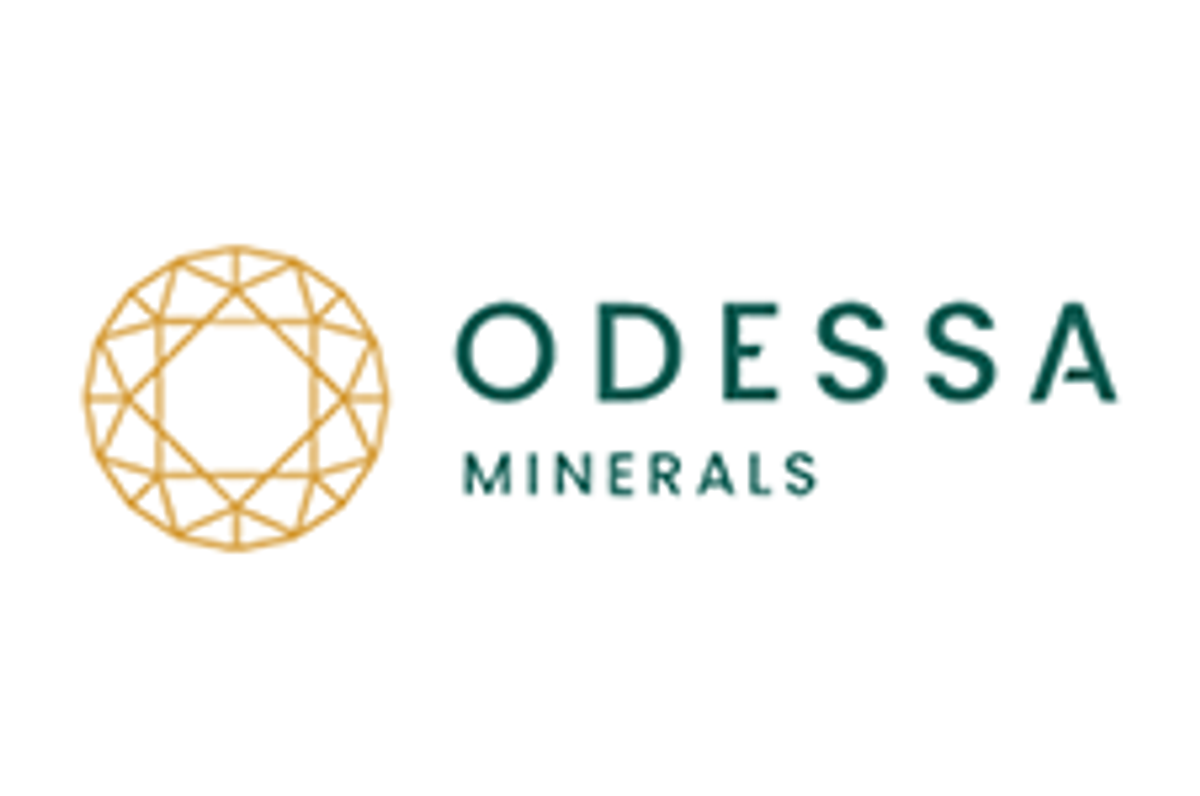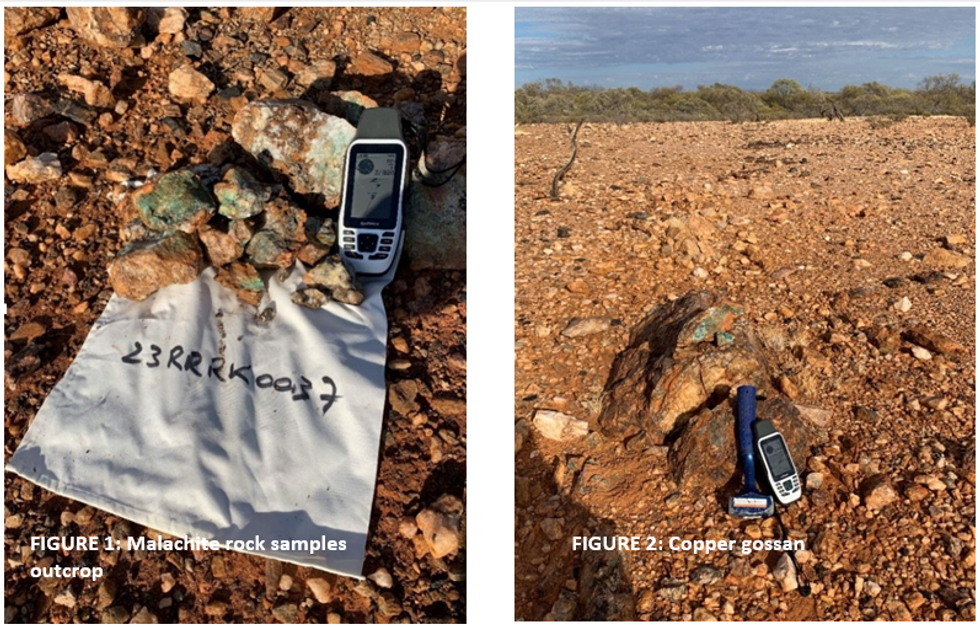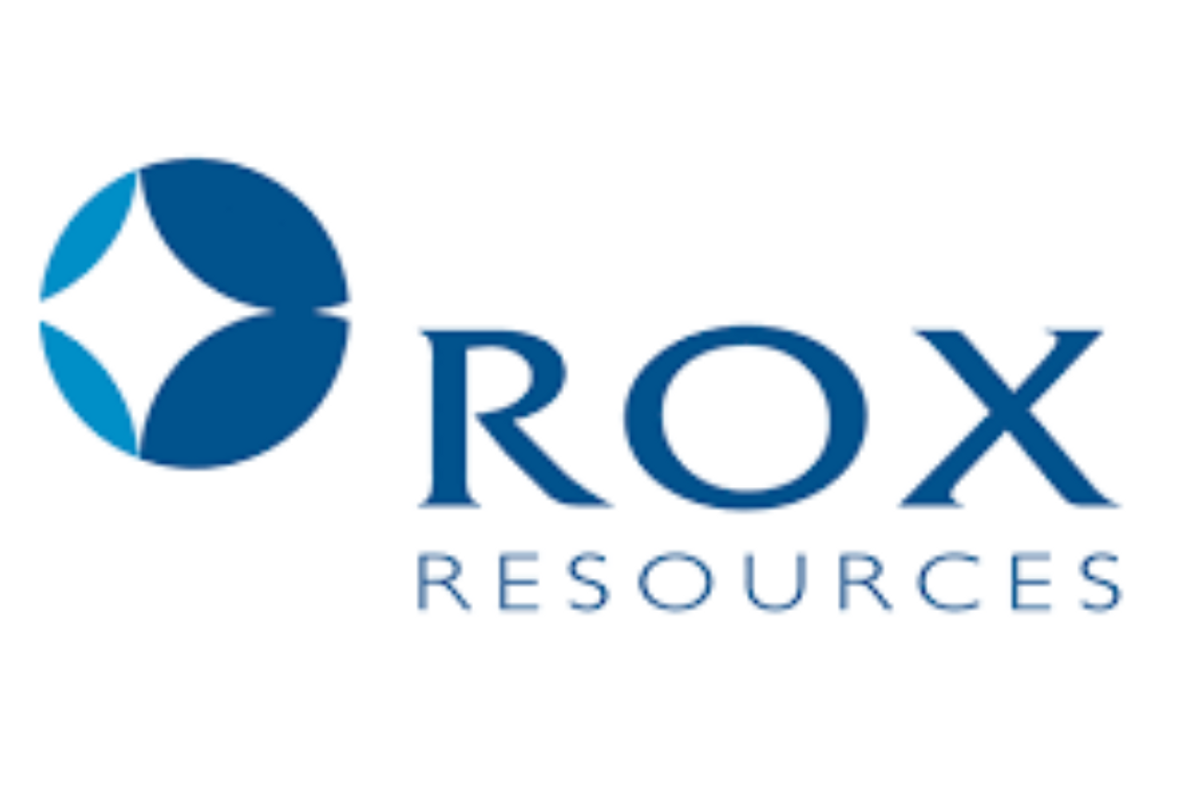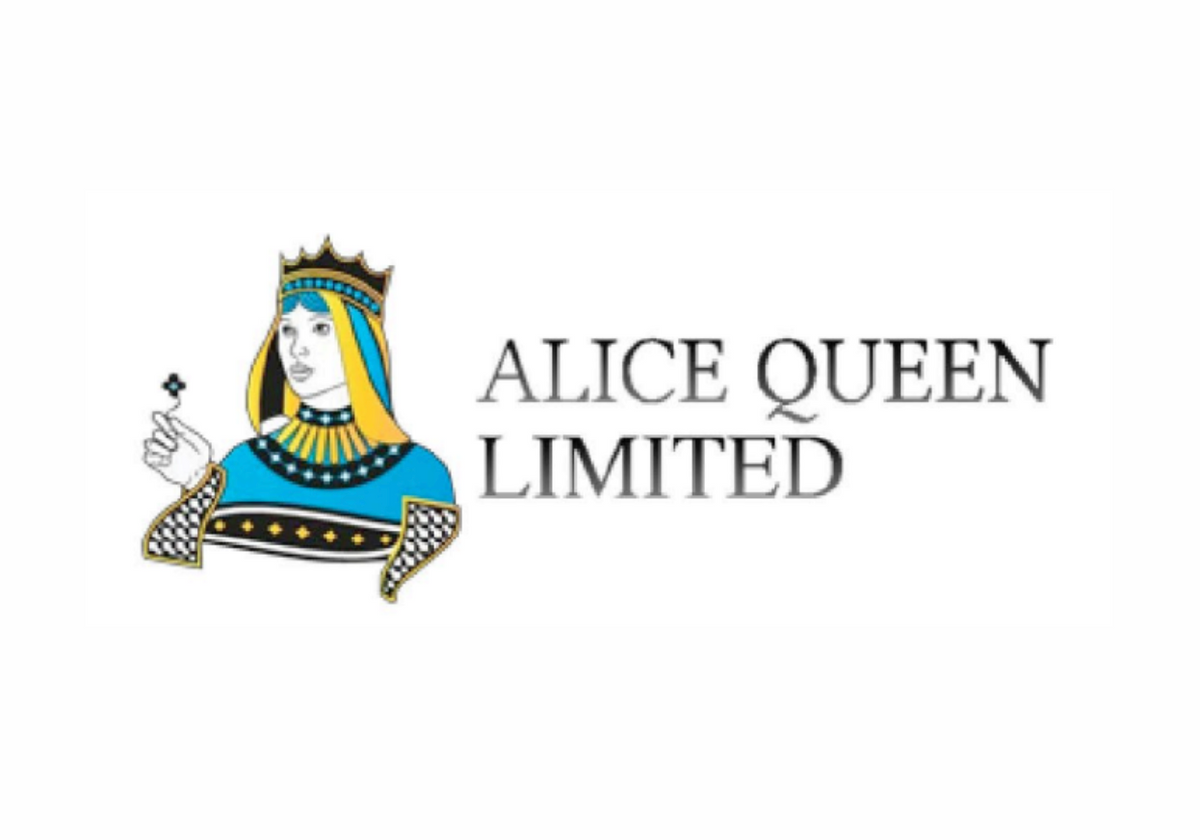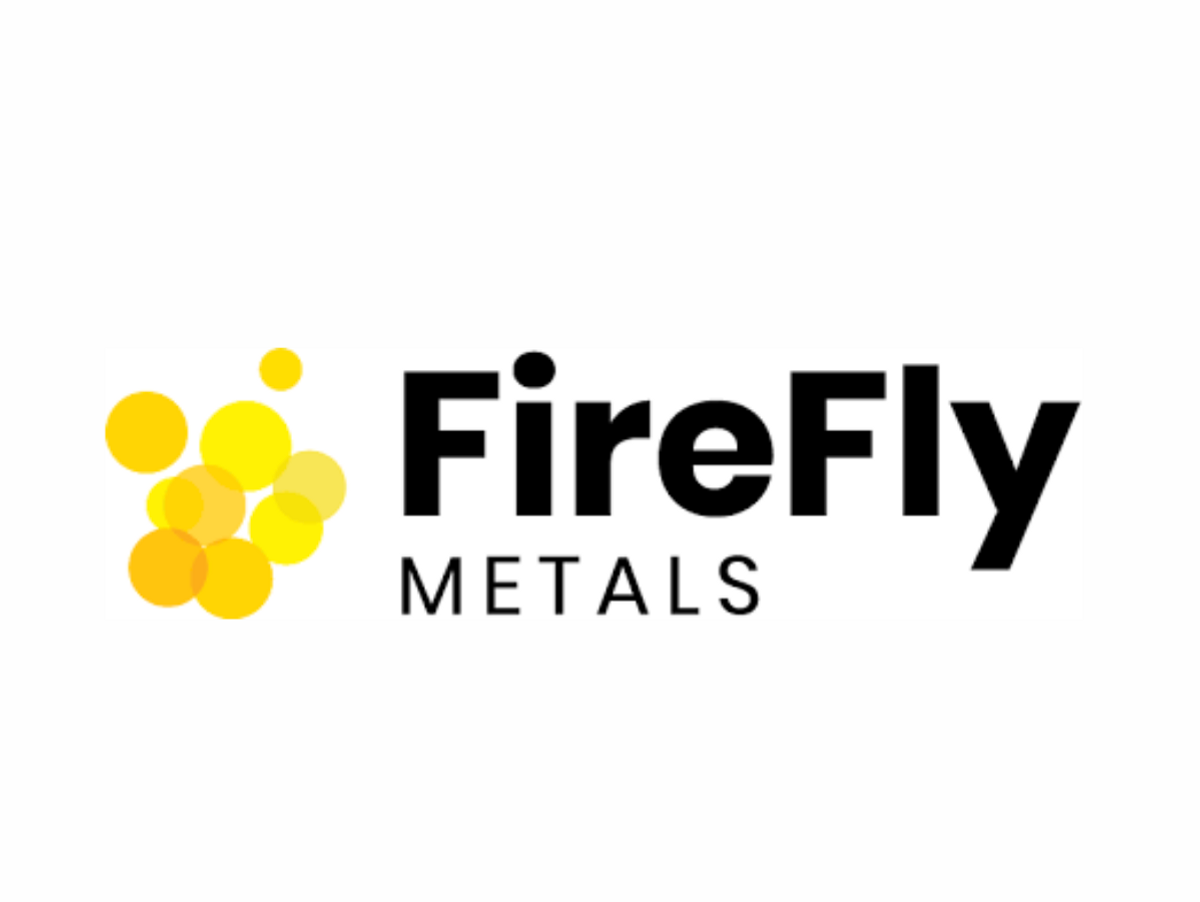- AustraliaNorth AmericaWorld
Investing News NetworkYour trusted source for investing success
- Lithium Outlook
- Oil and Gas Outlook
- Gold Outlook Report
- Uranium Outlook
- Rare Earths Outlook
- All Outlook Reports
- Top Generative AI Stocks
- Top EV Stocks
- Biggest AI Companies
- Biggest Blockchain Stocks
- Biggest Cryptocurrency-mining Stocks
- Biggest Cybersecurity Companies
- Biggest Robotics Companies
- Biggest Social Media Companies
- Biggest Technology ETFs
- Artificial Intellgience ETFs
- Robotics ETFs
- Canadian Cryptocurrency ETFs
- Artificial Intelligence Outlook
- EV Outlook
- Cleantech Outlook
- Crypto Outlook
- Tech Outlook
- All Market Outlook Reports
- Cannabis Weekly Round-Up
- Top Alzheimer's Treatment Stocks
- Top Biotech Stocks
- Top Plant-based Food Stocks
- Biggest Cannabis Stocks
- Biggest Pharma Stocks
- Longevity Stocks to Watch
- Psychedelics Stocks to Watch
- Top Cobalt Stocks
- Small Biotech ETFs to Watch
- Top Life Science ETFs
- Biggest Pharmaceutical ETFs
- Life Science Outlook
- Biotech Outlook
- Cannabis Outlook
- Pharma Outlook
- Psychedelics Outlook
- All Market Outlook Reports
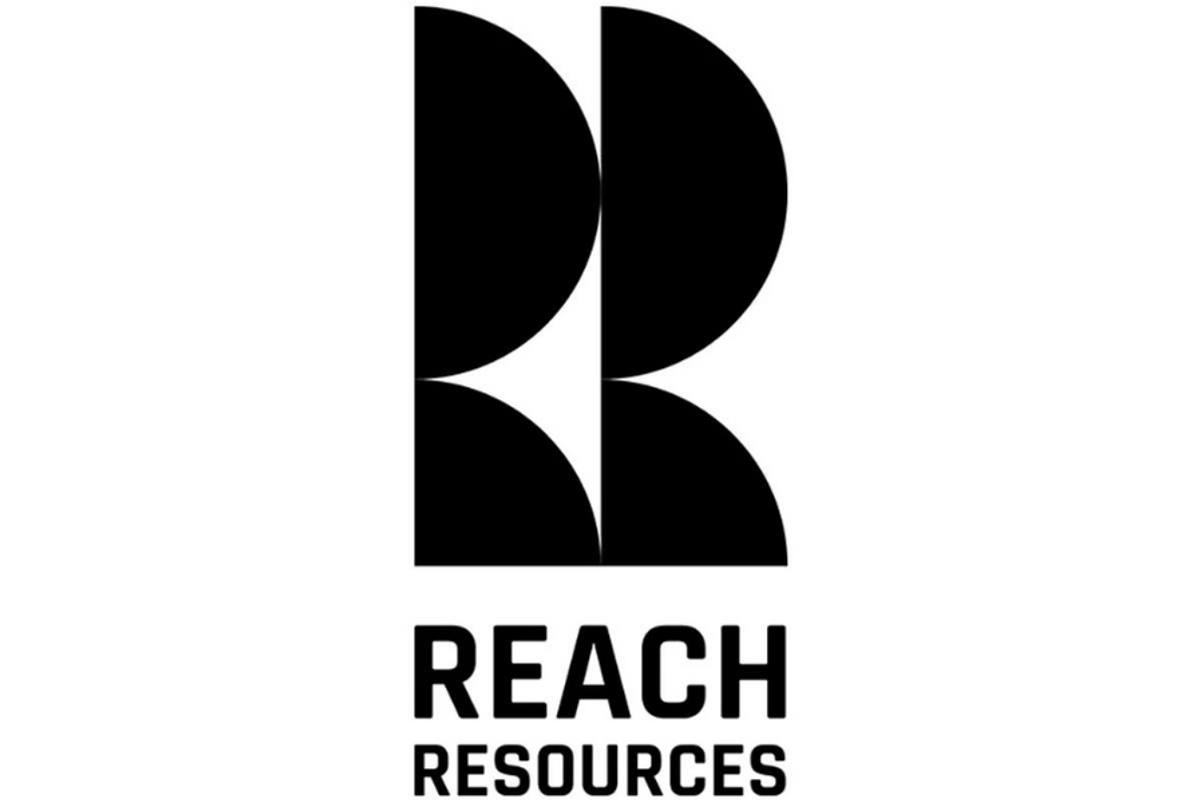
High Grade Manganese Up to 48% Mn at White Castles Project, Gascoyne W.A
Reach Resources Limited (ASX: RR1 & RR1O) (“Reach” or “the Company”) is pleased to announce receipt of high-grade manganese results of up to 48% Mn at the Company’s White Castles Project, in the Edmund Basin, approximately 80km north of the Company’s Morrissey Hill Lithium Project.
Highlights:
- High grade manganese mineralisation confirmed with rock chip samples reporting assays of up to 48% Mn, at the Company’s White Castles project in the Gascoyne, W.A.
- Potential for over 50km of continuous strike indicated from sampling results across the project area.
- Neighbours include Fortescue Metals Group to the east, Hastings Technology Metals to the west and Dreadnought Resources to the south-west.
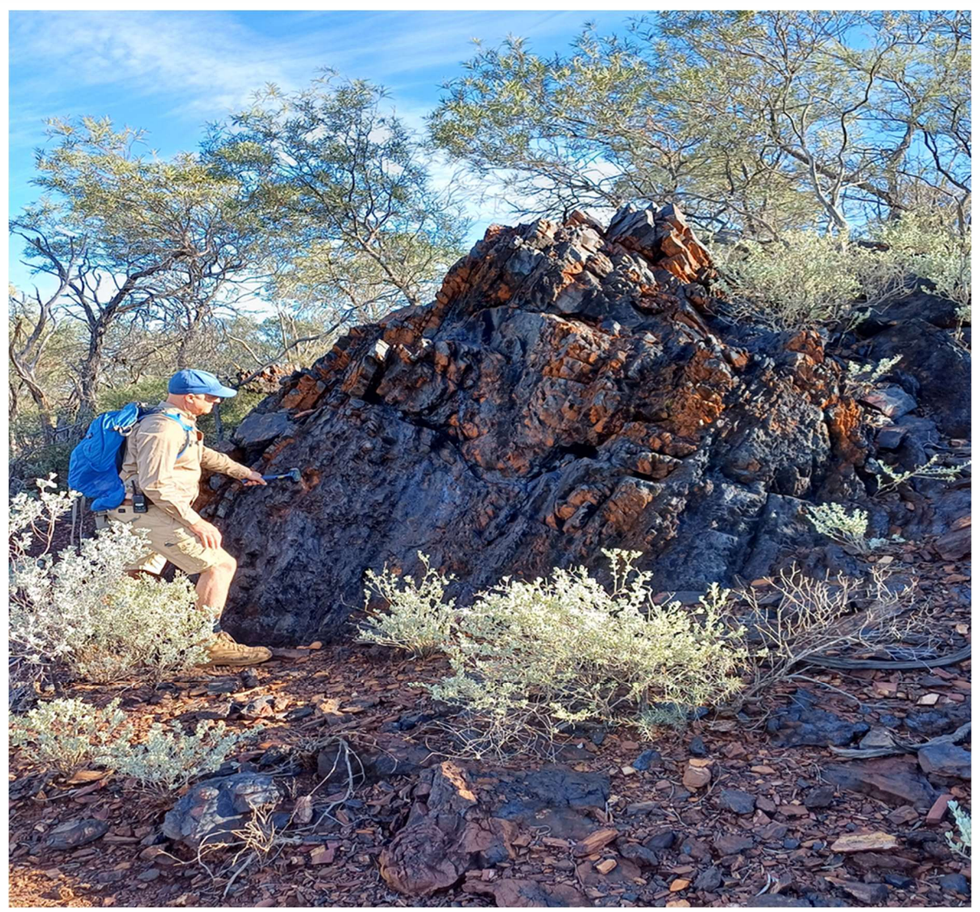
The receipt of assay results follows the Company’s reconnaissance rock chip sampling program, as announced on 20 September 2023. The White Castles project area comprises three large 100% owned strategically located tenements, and three tenement applications, totalling 665km2 (Figure 2).
Jeremy Bower CEO commented:
“These high-grade assay results are a great start to the assessment of our White Castles manganese project. We have deliberately targeted manganese as part of our battery metal strategy as we see the demand curve steepening in the coming years with the switch to alternative battery chemistries using manganese, over and above the baseload of demand from the steel industry.
Following the recent acquisition of tenement E09/2539 from Firebird Metals, we now have a large contiguous project area with a potential strike length of over 50km and in a commodity that is just starting to get its time in the sun.
Our next step is to perform a geochemical analysis and select the best parts of the project area for further sampling and detailed mapping. This will ensure that when we approach the traditional owners for the necessary approvals, we already have a good idea of our key target areas which will form the focus of early work programs.
The Future is within Reach”.
Click here for the full ASX Release
This article includes content from Reach Resources, licensed for the purpose of publishing on Investing News Australia. This article does not constitute financial product advice. It is your responsibility to perform proper due diligence before acting upon any information provided here. Please refer to our full disclaimer here.
Odessa Minerals: Exploring for Lithium and Rare Earths in Western Australia's Resource-rich Gascoyne Region
Quarterly Activities/Appendix 5B Cash Flow Report
Reach Resources Limited (ASX: RR1) (“Reach” or “the Company”) provides its activities report for the quarter ended 30 June 2023.
High-Grade Lithium Results at Yinnetharra (15 May 2023)
- Lithium mineralisation confirmed with rock chip samples reporting highly encouraging assays of up to 2.3% Li2O (lithium oxide); 4295ppm Cs (caesium) and 705.8ppm Ta2O5 (tantalum oxide).
- Multiple large, strike extensive, lithium-bearing pegmatites of the Spodumene-Petalite Subtype (Featherstone, J.M, 2004) confirmed at the Company’s Yinnetharra tenements, directly adjoining Delta Lithium (ASX: DLI) and Minerals 260 (ASX: MI6).
- Results from the Bonzer include:
- 23RRRK0003 - 14,422ppm or 1.4% Li2O, 2873ppm Cs ,714.4ppm Ta2O5 and 4891ppm Rb.
- 23RRRK0002 - 12,832ppm or 1.3% Li2O, 2205ppm Cs, 243.4ppm Ta2O5 and 4108ppm Rb.
- Results from the Bonzer include:
Outcropping Copper Gossan Delivers 33% Cu Assays (18 May 2023)
- High grade copper-oxide mineralisation (malachite) confirmed at the Company’s Morrissey Hill Project, Yinnetharra with rock chip samples reporting highly encouraging assays of up to 33.2% Cu; 0.2 g/t Au and 141.8g/t Ag.
14.3% Niobium & 70.3% HREO-Rare Earth Element NYF Pegmatite (1 June 2023)
- Sensational high-grade results from surface eluvial samples at Wabli Creek, Yinnetharra
- 14.3 % Nb2O5, 6.7% Ta2O5, 3689 ppm TREO with 70.3% HREO
- Independent geological experts RSC have advised that the consistent high-grade niobium and HREO is associated with a ~2.5km long rare element pegmatite swarm identified from historical records at Wabli Creek
- Importantly the mineralisation likely extends under cover (Jacobson et al, 2007)
- Source of high-grade niobium and heavy rare earth oxide (HREO) results confirmed as a rare element pegmatite swarm with niobium, yttrium, fluorine (NYF) geochemical signature
- Rare element (NYF) pegmatites are characterised by their unusual enrichment of niobium and heavy rare earth elements (HREE), in contrast to clay hosted or carbonatite deposits which predominantly contain light rare earth elements (LREE)
- Confirmation of a rare element pegmatite system increases the likelihood of identifying additional high-grade niobium and HREE which are listed as critical minerals by governments worldwide
Latest Assay Results Return up to 10.3% Niobium (28 June 2023)
- Spectacular assay results received from the latest surface eluvial and rock samples taken at the Wabli Creek rare element (NYF) pegmatite field have returned high grade niobium of 10.3% Nb2O5 (23RRRK243) and 2.6% Nb2O5 (23RRRK244). Additional anomalous rare earth elements (REE) results returned of up to 7082 ppm TREO.
- Importantly, samples from the latest program were taken up to 400m east of the previously mapped north-west pegmatite trend spanning ~1.5km, which returned results up to 14.3% Nb2O5, 6.7% Ta2O5, 3689 ppm TREO
- Latest results indicate a potential stacked pegmatite sequence and/or a new niobium/REE mineralisation source.
Click here for the full ASX Release
This article includes content from Reach Resources, licensed for the purpose of publishing on Investing News Australia. This article does not constitute financial product advice. It is your responsibility to perform proper due diligence before acting upon any information provided here. Please refer to our full disclaimer here.
Outcropping Copper Gossan Delivers 33% Cu Assays At Morrissey Hill Project, Yinnetharra
Reach Resources Limited (ASX: RR1 & RR1O) (“Reach” or “the Company”) is pleased to announce that it has received high grade copper, gold and silver results up to 33% copper, 0.2g/t gold and 142g/t silver from its recently completed rock chip sampling program at the Company’s Morrissey Hill Project, Yinnetharra, W. A (Refer to Figure 4).
HIGHLIGHTS
- High grade copper‐oxide mineralisation (malachite) confirmed at the Company’s Morrissey Hill Project, Yinnetharra with rock chip samples reporting highly encouraging assays of up to 33.2% Cu; 0.2 g/t Au and 141.8g/t Ag. (Figure 1).
- Results follow Morrissey Hill assays of up to 2.3% Li2O (ASX Announcement 15 May 2023).
- Mineralisation at the Swallowtail Copper Prospect was mapped over a strike length of at least 150m and remains open in all directions.
- Significant results include:
- 33.2% Cu, 0.2g/t Au and 141.8g/t Ag (23RRRK0039).
- 14.7% Cu, 0.02g/t Au and 55.6g/t Ag (23RRRK0042).
- 4.2% Cu, 0.3g/t Au and 5.7g/t Ag (23RRRK0041).
- 2.3% Cu, 0. 2g/t Au and 5.0g/t Ag (23RRRK0043).
- Historical sampling 3.0km’s west of Swallowtail could potentially extend the strike with historical results returned:
- 18.5% Cu, 1.1g/t Au and 6.8g/t Ag
- 18.5% Cu, 1.1g/t Au and 6.8g/t Ag
- The rock chip results confirm the Company’s targeting methodology and the potential of the area to host significant mineralisation.
- Morrissey has never been drilled & geochemical surveys planned to commence next week.
Commenting on the results CEO Jeremy Bower said:
“The Morrissey Hill tenement at our Yinnetharra Project continues to deliver. These are outstanding copper results and in conjunction with the 2.3% Li20 announced earlier this week, it is clear how prospective the ground is. We’re focused on sourcing the critical and battery minerals of the future and copper is an important part of our strategy. Despite several world class copper‐gold and polymetallic base metal deposits in the East Capricorn Orogen, the West Capricorn and Gascoyne has been massively under‐ explored. We see this as a huge opportunity.
Importantly, we are fully funded to complete our field programs and drilling campaigns earmarked for this year. Our focus remains on thorough geochemical assessment of each target and getting drill rigs out to Morrissey Hill as soon as possible. This will mean consistent news flow for our shareholders over the coming months.”
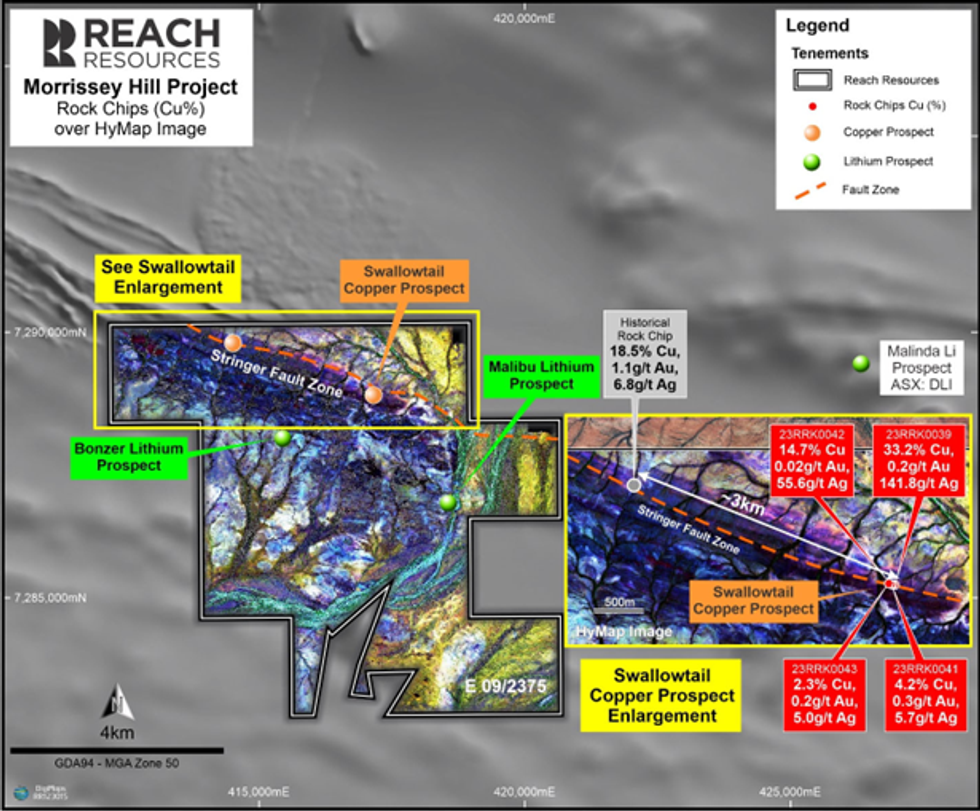
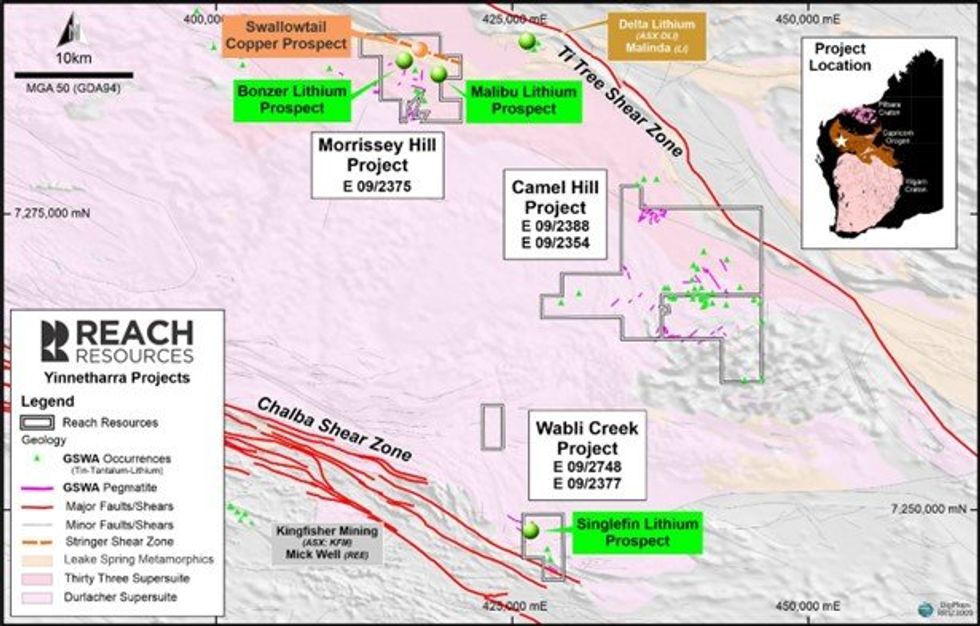
The rock chip results confirm the Company’s targeting methodology and the potential of the area to host significant mineralisation. Systematic surface geochemical surveys including soils, stream sediment and rock chip sampling are planned to commence immediately. Results from this work will guide follow up programs which if warranted may include electromagnetic geophysical surveys and drill testing of priority targets.
The results were reported from an outcropping quartz‐veined gossan, the Swallowtail Prospect, showing visible malachite (copper‐oxide) over a strike length of approximately 150m. The gossan strikes east‐ west, appears to dip steeply towards the south and remains open in both directions. A single historical sample located some 3.0km’s west of Swallowtail, and within the same structural corridor, also reported high grade copper, gold and silver assays indicating a potential strike length of the target zone in excess of 3km’s (Refer to Figure 3).
Click here for the full ASX Release
This article includes content from Reach Resources, licensed for the purpose of publishing on Investing News Australia. This article does not constitute financial product advice. It is your responsibility to perform proper due diligence before acting upon any information provided here. Please refer to our full disclaimer here.
Reach Resources’ Strategic Position Between Two of WA’s Mining Heavyweights
Reach Resources’ (ASX:RR1) strategic position with its Morrissey Hill project has placed the critical mineral explorer on the radar of two of Western Australia’s mining giants Delta Lithium (ASX:DLI) and Minerals 260 (ASX:MI6), according to an article published in The West Australian.
“While Delta and Minerals 260 have between them wrapped up what appears to be the region’s prime ground, both of their maps show a glaring and curious anomaly. Closer inspection reveals that a reasonable chunk of ground, right in the middle of the two bigger players, is held by the $10m market-capped Reach Resources,” the article said.
Reach acquired the Morrissey Hill lithium project in February, at the same time that it acquired the Camel Hill and White Castles tenements prospective for rare earths and manganese, respectively, covering four tenements. Morrissey hosts historical, high-grade lithium, tantalum, rubidium, caesium and niobium, according to Reach.
Click here to connect with Reach Resources’ Limited (ASX:RR1) for an Investor Presentation.
Multiple New Lithium (LCT) Pegmatite Targets Confirmed
Reach Resources Limited (ASX: RR1 & RR1O) (“Reach” or “the Company”) engaged globally renowned geological consultants RSC Consultants Limited (RSC) to assess the potential of the Company’s Gascoyne projects for:
- Lithium (Li): hard rock, high grade LCT Pegmatites
- Rare Earth Elements, Heavy and Light (HREE; LREE): clay/hard rock hosted
- Manganese (Mn): high grade strata bound, supergene, and• Precious and base metals (Au; Ag; Cu-Pb-Zn)
HIGHLIGHTS
- Independent geological experts RSC consultants have identified four priority target areas for Lithium-Caesium-Tantalum (“LCT”) Pegmatites within the Company’s Critical Elements Projects, located in the centre of the rapidly developing Gascoyne “Battery Metals” Province, WA
- Each of the target areas are associated with confirmed fertile parental granites of the Thirty Three and Durlacher Supersuites and contain the same metasedimentary sequences which host Red Dirt Metals (ASX: RDT) Yinnetharra Lithium Project, less than 10 km’s to the NE of Reach Resources’ tenure
- All of the targets are defined by favourable geology, multi-element pathfinder geochemistry and the presence of mapped Geological Society of Western Australia (GSWA) Tin, Tantalum and Lithium pegmatites
- A helicopter supported field reconnaissance program has been initiated to assess the priority areas in more detail
- Drilling of priority targets is scheduled to commence in CY Q3/4 2023 once all regulatory approvals are received
CEO Jeremy Bower commented:
“RSC’s independent expert analysis confirms our belief that our landholding in the Gascoyne has the potential to host significant battery metal deposits.
Phase 1 of the assessment focused on the lithium potential at our Critical Elements Projects and has not only cemented Morrissey Hill as our primary lithium target but importantly has identified three new lithium target areas. Each of the areas are defined by the presence of a highly fertile parent granite and supported by key multi-element geochemistry including lithium, caesium, tantalum, tin and rubidium which are all well documented associations of lithium bearing “rare metal” LCT pegmatite mineral systems.
This is an exciting time for the Company and our shareholders, and we look forward to delivering updates to the market over the coming months. The Future is within Reach”.
Phase 1 of the assessment focused on the lithium potential of the Company’s Critical Elements Projects which includes the newly acquired Morrissey Hill and Camel Hill projects as well as the Wabli Creek project (Figure 1).
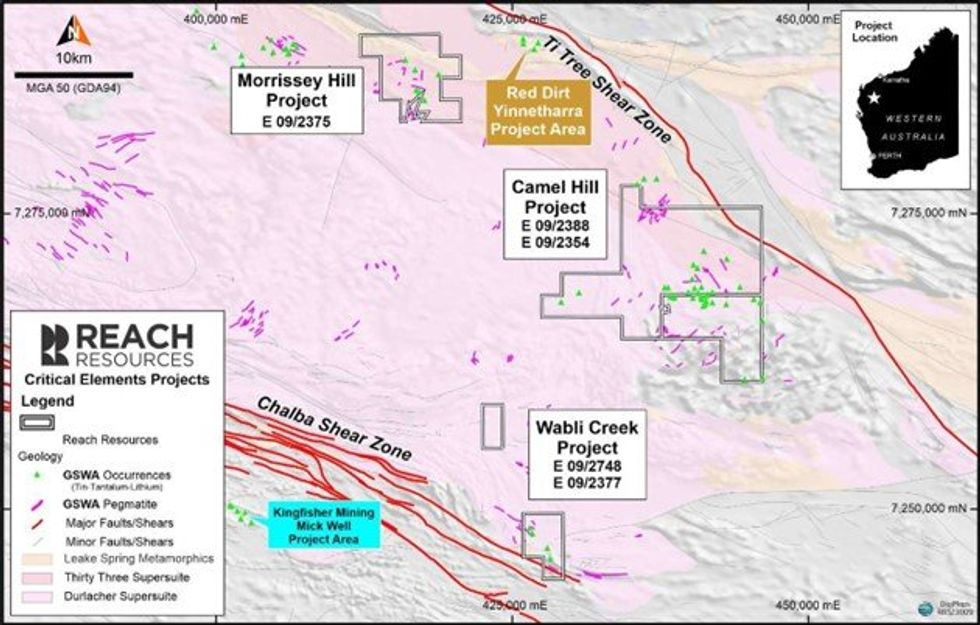
The assessment included a review of relevant deposit models and mineralisation styles of interest, regional and local geology, local mineral systems, academic papers, open file company and government reports and all available geochemical, geophysical and remote-sensed data sets.
Click here for the full ASX Release
This article includes content from Reach Resources, licensed for the purpose of publishing on Investing News Australia. This article does not constitute financial product advice. It is your responsibility to perform proper due diligence before acting upon any information provided here. Please refer to our full disclaimer here.
Spearmint More Than Doubles the Acreage of the George Lake South Antimony Project in New Brunswick, Canada
Spearmint Resources Inc. (CSE: SPMT) (OTC Pink: SPMTF) (FSE: A2AHL5) (the "Company" or "Spearmint") wishes to announce that it has more than doubled the acreage on the recently acquired George Lake South Antimony Project in New Brunswick, Canada. This project now consists of 4,722 contiguous acres prospective for antimony.
James Nelson, President of Spearmint, stated, "In light of the recent ban of antimony by China to the USA, we made this strategic acquisition increasing the size of the George Lake South Antimony Project. Management feels that antimony will be one of the most sought after resources in 2025 and we plan to pursue this space with vigor and are currently evaluating additional projects. Management is formulating a plan on the George Lake South Antimony Project, and management also intends to update the market on Spearmint's crypto diversification plan in the near future as well. These are truly exciting times for Spearmint and Spearmint shareholders."
Recently, China banned exports of critical minerals, including antimony, to the United States. As trade tensions escalate between the United States and China, this move clearly emphasizes the urgent need for Western nations to secure reliable long-term sources of these critical minerals, which are now at the forefront of the global supply chain crisis.
Antimony is an essential component in semi-conductors, battery storage technology, and has several military applications. Prices of antimony trioxide in Rotterdam had soared by 228 per cent since the beginning of the year to $39,000 a metric tonne on Nov. 28, as shown by data from information provider Argus. The move is a considerable escalation of tensions in supply chains where access to raw material units is already tight in the West.
This new project is in the direct vicinity of the Lake George Antimony Mine in New Brunswick which was operated intermittently from 1876 to 1996 and was once the largest primary antimony producer in North America. Antimony's primary uses are:
- Semiconductors and Electronics: The growing electronics and semiconductor industries require antimony, making it a critical material for technological development, including infrared sensors and components for military and aerospace uses.
- Battery Technology: Antimony is also used in lead-acid batteries and in emerging technologies, such as energy storage and lithium-ion battery enhancements, which is a significant driver of demand in the future.
- Flame Retardants: The demand for antimony remains strong due to its use in flame-retardant materials, which are essential in a wide range of products like textiles, electronics, and plastics. As safety regulations around fire-resistant materials become stricter, the need for antimony-based compounds continues to grow.
About Spearmint Resources Inc.
Spearmint holds the include four projects in Clayton Valley, Nevada: the 1,136-acre McGee lithium clay deposit, which has a resource estimate of 1,369,000 indicated tonnes and 723,000 inferred tonnes of lithium carbonate equivalent (LCE) for a total of 2,092,000 tonnes of LCE, directly bordering Pure Energy Minerals & Century Lithium Corp.; the 280-acre Elon lithium brine project, which has access to some of the deepest parts of the only lithium brine basin in production in North America; the 124-acre Green Clay lithium project; and the 248-acre Clayton Ridge gold project and now the 4,722 acre George Lake South Antimony Project in New Brunswick.
For a cautionary note and disclaimer on the crypto diversification, please refer to the news release dated November 12, 2024.
Qualified person for mining disclosure:
The technical contents of this release were reviewed and approved by Frank Bain, PGeo, a director of the company and qualified person as defined by National Instrument 43-101.
This property was acquired via staking.
Contact Information
Tel: 1-604-646-6903
www.spearmintresources.ca
"James Nelson"
President
Spearmint Resources Inc.
High grade Assay Results Continue at Youanmi
West Australian gold exploration and development company, Rox Resources Limited (“Rox” or “the Company”) (ASX: RXL), has received the final batch of assays from its 11,000m DD and RC program at the Youanmi Gold Project in WA.
- The latest batch of assays have been received from the 11,000m drilling program (both diamond core and reverse circulation) at the high gold-grade Youanmi Gold Project, located centrally in Western Australia’s prolific gold fields
- The recently-completed infill/exploration program aimed to improve resource confidence and open up corridors for resource growth; to underpin the Definitive Feasibility Study (DFS), and, additionally, provide sample material for ongoing metallurgical optimisation test-work for the DFS program
- Latest highlights from the program include:
- RXDD131: 4.38m @ 19.07 g/t Au from 387.98m,
- incl. 1.73m @ 41.43 g/t Au from 389.96m
- RXDD119: 4.56m @ 14.60 g/t Au from 220.64m
- RXDD115: 2.99m @ 21.11 g/t Au from 249.88m
- RXDD119: 4.0m @ 7.37 g/t Au from 162.0m
- RXDD132: 7.19m @ 3.90 g/t Au from 263.61m
- RXDD133: 2.83m @ 6.53 g/t Au from 431.00m
- RXDD128: 3.82m @ 4.51 g/t Au from 364.59m,
- incl. 1.73m @ 8.22 g/t Au from 364.59m
- incl. 1.73m @ 8.22 g/t Au from 364.59m
- RXDD122: 0.95m @ 13.50 g/t Au from 204.44m
- §These results further demonstrate the continuity of high- grade gold mineralisation along the Youanmi greenstone belt belt, and the potential for resource growth both at depth and along-strike, with discovery potential to the south
- 35,000m Step-up drill campaign well underway with the plan to bring forward ounces and increase the mine plan
The program focused on converting Inferred stopes at Pollard, United North and Youanmi Main to higher confidence Indicated classification and providing material for metallurgical testing for the upcoming Definitive Feasibility Study (DFS) – on track for H2 CY25.
This final consignment of diamond assay results are the fourth batch of assays results returned from the drill program and have been entirely drilled from the Pollard, Youanmi and United North areas (Figure 1).
Rox Resources’ Chief Executive Officer, Phillip Wilding, commented:
“It’s pleasing to round out the 11,000m RD and DD drilling program with another batch of excellent intercepts.
“More importantly, the program has significantly improved our knowledge of the high grade and underexplored Youanmi ore system, and shown that mineralisation remains open at depth.
“Next steps are to convert Inferred areas of the Resource to the higher confidence Indicated classification, and finalise key intercepts of sample material for metallurgical test work to feed into the Youanmi DFS.
“We are excited to have commenced the 35,000m Step-up program to potentially bring forward ounces in the mine plan and significantly increase the size of the Pollard ore zone.”
Youanmi Major Growth Drill program
Resource drilling has focused on converting selected Inferred stopes in the current Mineral Resource of 16.2Mt at 4.4g/t Au for 2.3Moz (Indicated: 10.7Mt at 4.5g/t Au for 1.6 Moz : Inferred 5.5Mt at 4.2g/t Au for 0.7 Moz) 1 to higher confidence Indicated classification at Pollard, United North and Youanmi Main as shown in plan on Figure 1. The drilling has also provided both sample material for metallurgical testing and valuable geological data for the pending Definitive Feasibility Study (“DFS”) planned for second half of 2025.
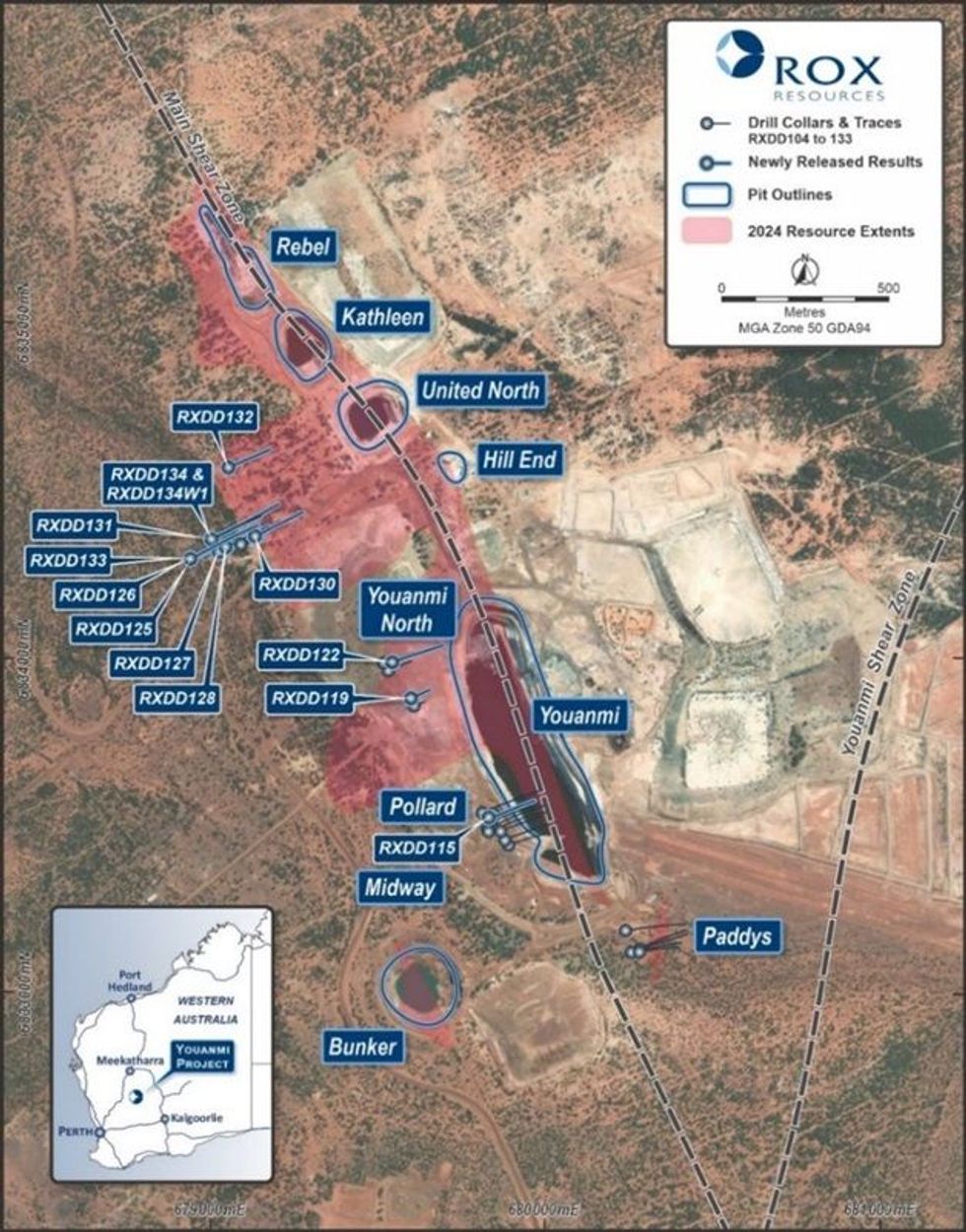
Outside of the immediate resource area, drilling was also conducted on near-mine exploration and focused on the Youanmi South prospect area, or Paddy’s Lode, first reporting high-grade intercepts in 20232. The drilling at Paddy’s has complimented the Company’s exploration strategy moving south along the Main Lode Shear Zone (MLSZ) and adding additional gold ounces to the Resource. Youanmi South has the potential to grow the Resource above the 103kozpa Production Target outlined in the recently completed Pre-Feasibility Study (“PFS”)3.
Click here for the full ASX Release
This article includes content from Rox Resources Limited, licensed for the purpose of publishing on Investing News Australia. This article does not constitute financial product advice. It is your responsibility to perform proper due diligence before acting upon any information provided here. Please refer to our full disclaimer here.
Drilling Commenced at Viani in Fiji
Alice Queen Limited (ASX:AQX) (“Alice Queen” or the “Company”) is pleased to announce that drilling has commenced at its 100% owned Viani Project in Vanua Levu, Fiji (see Image 1). The initial planned three-hole diamond drilling program will test for high-grade epithermal gold-style mineralisation intersected at the Viani Project by historic drilling.
HIGHLIGHTS
- The Phase 1, three-hole diamond drilling program has commenced at the Viani Project, Fiji and will test for extensions to the quartz vein gold mineralisation at depth.
- Phase 1 is expected to be completed in early 2025, with plans for additional drilling under the same program dependent on the initial results
- The Viani Project (SPL1513) covers an area of approximately 200km2 and is largely underexplored.
- At the Dakuniba prospect within Viani, low sulphidation epithermal high-grade gold mineralisation has been mapped over >3km strike length.
- Diamond drilling completed by Japan International Cooperation Agency (JICA) in 1995 to 1997 intersected high-grade gold in low sulphidation epithermal quartz veins, including 0.6m @ 27.6 g/t Au.
With drilling underway, Alice Queen is positioned to test the epithermal gold-style mineralisation identified in historic drilling at the Viani Project. Weather permitting, we anticipate completing the Phase 1, three-hole diamond drilling program in early 2025. Following this, our exploration team will mobilise the drill rig to the Sabeto Project in Fiji to maintain the momentum of this campaign. To deliver timely results to shareholders, we intend to accelerate the analysis of the drill core at ALS Brisbane.”
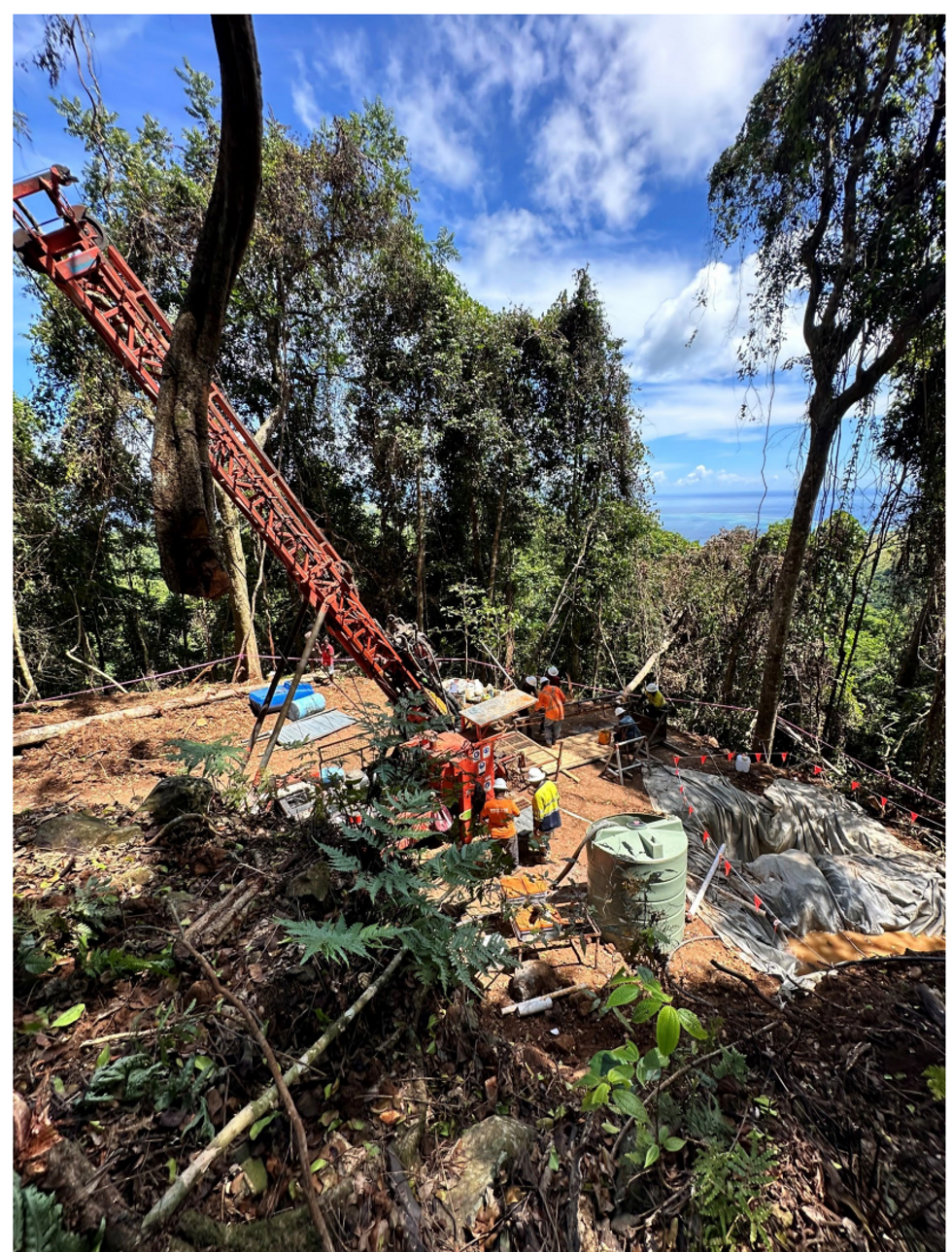
Details
Geology
The geology of the Viani Project (SPL 1513) comprises olivine basalts and volcaniclastics of the Natewa Volcanic Group which are intruded by andesite sills and dykes. In the 1940s, gold mineralisation was found by local prospectors near the village of Dakuniba. At Dakuniba, low sulphidation style epithermal gold occurs in quartz veins, and silicified rocks along a 3km long NE trending zone.
In 1995-1997, Japan International Cooperation Agency (JICA) drilled six diamond holes at Dakuniba and intersected high-grade gold in chalcedonic, crustiform, colloform banded quartz veins at depths of 50m to 100m below surface (i.e. MJVFV-5 intersected 2.2m @ 11.3 g/t Au, incl 0.6m @ 27.6 g/t Au at 121m downhole). This high-grade gold mineralisation is open in all directions.
Proposed Drill program
The initial Phase 1 drill program at Viani (see Table 1) will comprise three diamond drillholes designed to test continuity to the epithermal gold mineralisation previously intersected in JICA drillhole MJVFV- 5 (2.2m @ 11.3 g/t Au) (see Figure 2). The drilling will test for extensions to the gold mineralisation at depth and along strike.
Click here for the full ASX Release
This article includes content from Alice Queen Limited, licensed for the purpose of publishing on Investing News Australia. This article does not constitute financial product advice. It is your responsibility to perform proper due diligence before acting upon any information provided here. Please refer to our full disclaimer here.
FireFly Drills its Best Hole Yet with Assay of 86.3m at 3.7% CuEq
Latest drilling returns very thick intersections with exceptional grades, outlining a rich area of mineralistion which will form part of the next Resource update
FireFly Metals Ltd (ASX: FFM) (“Company” or “Firefly”) is pleased to announce its best assays yet at the Green Bay copper-gold project.
- Latest drilling at the Ming Mine within the Green Bay Project returns spectacular results which support the Company’s strategy to continue growing the Resource (currently 59Mt at 2% CuEq; see ASX release dated 29 October 2024)
- There are two distinct styles of mineralisation at Ming; upper copper-gold rich Volcanogenic Massive Sulphide (‘VMS’) lenses above a broad copper footwall stringer zone (‘FWZ’)
- The latest drilling reveals strong FWZ mineralisation directly below the high-grade VMS; This has resulted in continuous copper-gold intersections which are both wide (~true thickness) and high-grade, including drill holes:
- 86.3m @ 3.7% CuEq 1 (3.1% Cu & 0.6g/t Au) in hole MUG24-079
Intersection includes two distinct VMS lodes grading 15.5m @ 4.6% CuEq and 9.9m @ 5.8% CuEq above a broad copper FWZ intersection with a high-grade core of 27.6m @ 5.3% CuEq
- 76.3m @ 2.9% CuEq (2.4% Cu & 0.5g/t Au) in hole MUG24-073
Intersection includes an upper VMS lode grading 20.1m @ 6.1% CuEq above multiple FWZ intersections including 24.0m @ 2.6% CuEq and 11.0m @ 2.4% CuEq
- Other notable assays received subsequent to the completion of the October 2024 Resource update include (~true thickness):
- 7.9m @ 3.8% CuEq (1.1% Cu & 2.9g/t Au) VMS zone MUG24-070
- 21.0m @ 1.8% CuEq and 21.9m @ 1.9% CuEq and 19.7m @ 2.0% CuEq FWZ zone MUG24-070
- 50.9m @ 1.7% CuEq (1.6% Cu & 0.1g/t Au) FWZ zone MUG24-069
- Both the high-grade massive sulphide zones and broad footwall stringer zones remain open, with downhole geophysical surveys indicating likely extensions to the mineralisation
FireFly Managing Director Steve Parsons said: “These exceptional new results highlight both the quality and ongoing growth potential at Green Bay.
”The results, which come from some of the deepest holes drilled to date, are world-class, demonstrating exceptionally high grades over huge true widths. They will be included in the next Resource update.
“The Resource remains open, and we will continue to add value through the drill bit by continuing to grow and infill what is already a high-grade and large-scale copper deposit”.
The results highlight the huge scope for ongoing growth in the Resource, which already stands at 59Mt @ 2% for 1.2Mt of contained copper metal equivalent.
These reported intersections were received after the October 2024 Resource update.
There are two distinct styles of mineralisation at the Ming underground mine at Green Bay. One comprises the upper copper-gold rich Volcanogenic Massive Sulphide (‘VMS’) lenses. This sits above a broad copper stringer zone known as the Footwall Zone (‘FWZ’).
Drilling at the margins of the current Resource show the development of a strong copper-rich footwall zone directly beneath the upper VMS lenses. In other parts of the deposit the separation of the VMS and FWZ can exceed 50 metres. Their convergence has resulted in thick and consistent high-grade copper and gold intersections which are amongst the best mineralised results returned from the deposit to date. Highlights include 86.3m @ 3.7% CuEq (~true thickness) made up of two separate VMS intersections of 15.5m @ 4.6% CuEq and 9.9m @ 5.8% CuEq above a thick FWZ mineralised zone with a core of 27.6m @ 5.3% CuEq.
Both the high-grade massive sulphide zones and broad footwall stringer zones remain open, with downhole geophysical surveys indicating probable extensions to the mineralisation pointing to future resource growth.
The Company will continue with its strategy of Resource growth at Ming with exploration development continuing to position drill rigs to deliver Resource growth during 2025. Four rigs continue to drill underground as part of the fully-funded 130,000m campaign designed to deliver both additional Resource extensions and infill drilling to increase confidence in the Inferred areas of the current estimate.
FireFly is well funded with ~A$88M in cash at the end of October 2024.
Click here for the full ASX Release
This article includes content from Firefly Metals, licensed for the purpose of publishing on Investing News Australia. This article does not constitute financial product advice. It is your responsibility to perform proper due diligence before acting upon any information provided here. Please refer to our full disclaimer here.
Latest News
Latest Press Releases
Related News
TOP STOCKS
Investing News Network websites or approved third-party tools use cookies. Please refer to the cookie policy for collected data, privacy and GDPR compliance. By continuing to browse the site, you agree to our use of cookies.
